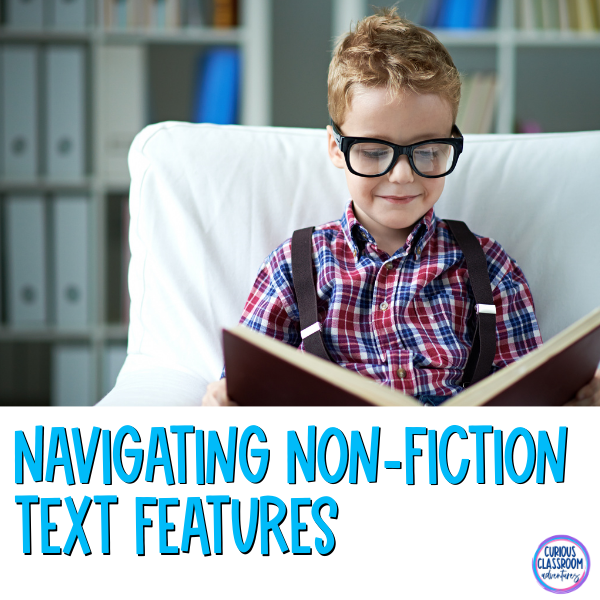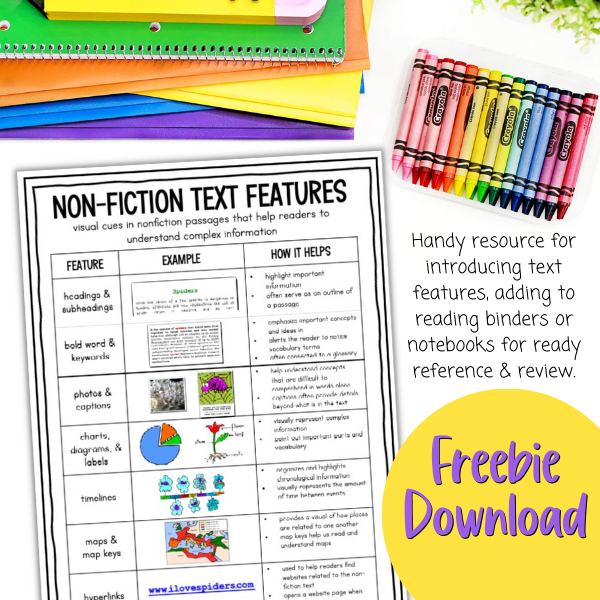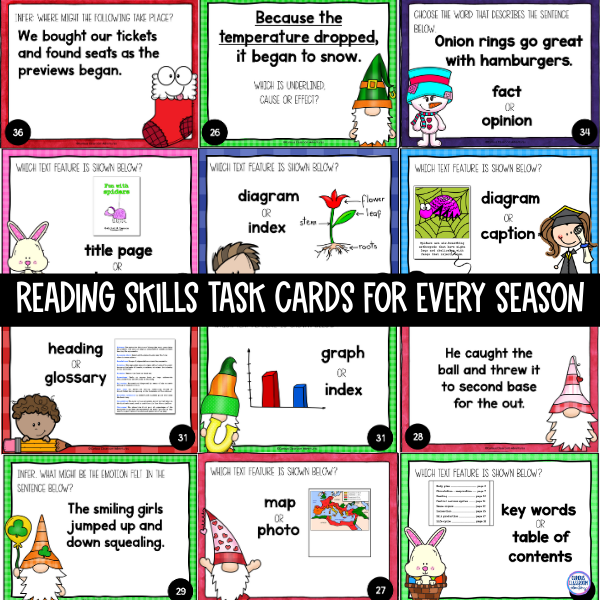Have you ever wished you could remember what you read in a textbook, but for some reason, the information just didn’t stick? There’s a good chance that you weren’t paying attention to the non-fiction text features that are right in front of you! Text features, such as bold words, photos, captions, diagrams, infographics, hyperlinks, maps, subtitles, and more, can help readers understand and remember what they’re reading! In this post, we’ll explore some different types of non-fiction text features and discuss how you can help your students identify and apply them to their reading comprehension. Grab this free text features reference chart you can share with your students and then dive into each one!
Headings and Subheadings
Headings and subheadings are common text features in nonfiction books, and they serve to highlight important information. They often serve as an outline of a passage. Teach your students to look at these words and headings and pay attention to the information that follows. For example, if a heading says “Causes of Global Warming,” your students can infer that the information that follows will discuss the different causes of global warming.
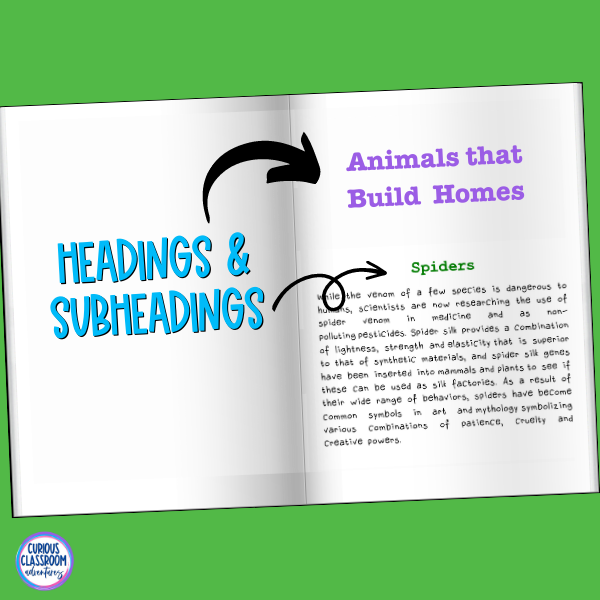
Photos and Captions
Photos help readers understand concepts that are difficult to comprehend in words alone. Captions and labels are text features that often accompany photos in non-fiction books, and they can help students understand and remember information presented in photographs (or other visual information). Encourage your students to read the captions and labels carefully and try to connect them to the visuals. For example, a photograph of a lion in the African savannah might include a caption that explains the lion’s hunting habits.

Diagrams, Charts, and Labels
Diagrams and charts are often used to visually represent complex information. Teach your students to look for these text features and read them carefully. Encourage them to look for patterns and connections in the information presented. For example, a chart that shows the different types of clouds might help students understand the patterns of weather in their area. A diagram of a cell might help students create a mental picture of something too small to see the human eye. The labels that accompany diagrams such as that of a cell will help students understand the individual parts and learn the vocabulary associated with it.

Hyperlinks and Online Resources
As technology becomes more integrated into the classroom, it’s important to teach your students how to navigate online resources. Teach your students how to click on hyperlinks and explore websites related to the non-fiction text they’re reading. Encourage them to look for information that supports or challenges what they’ve learned so far.

Infographics, Timelines, and Maps
Infographics and timelines combine visual and textual information to help readers understand complex data. Teach your students to read these text features carefully and look for patterns and trends in the information presented. For example, an infographic that shows the different ages at which children learn to read in different countries might help students understand how culture affects education. A map of those same countries might help students see the location of those countries in relation to one another. Maps are usually accompanied by a map key which provides valuable information about how to interpret the map.
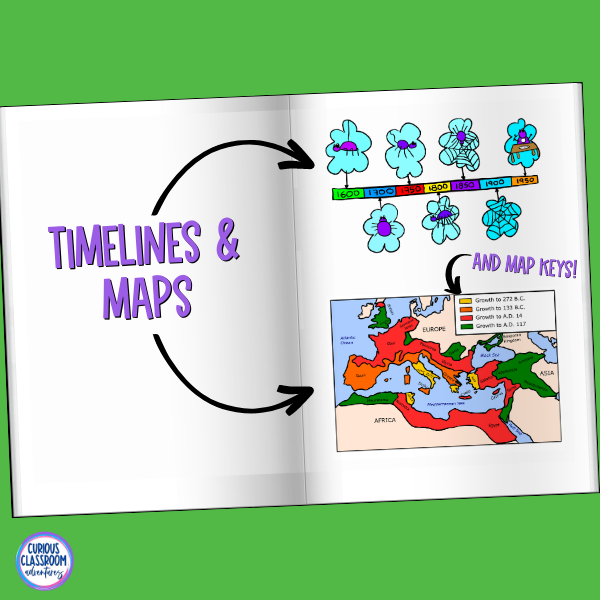
Bold, Italics, and Underline
We all know what bold words are – they are the words in a text that stand out from the rest due to their thickness, font, and color. Bold words are used to emphasize important concepts and ideas in the text. Authors will also use underlines and italics to draw the reader’s attention to important words and phrases in the text. To teach your students how to recognize and use bold words, give them a non-fiction article and ask them to identify the bold, italicized, or underlined words. Then, ask them to explain why the author chose to stylize (or draw attention to) those words. This activity will help your students to recognize the subject-specific vocabulary used in non-fiction texts, how to find those in the glossary, and the importance of paying extra attention to them.
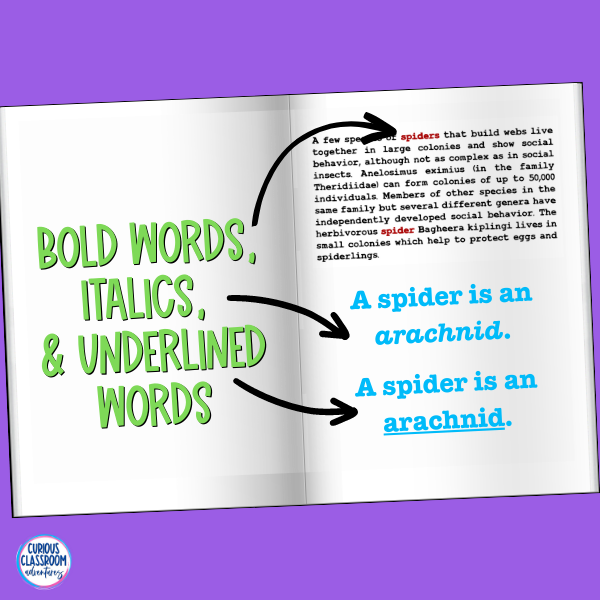
Once you’ve introduced all these text features, give students plenty of opportunity to practice identifying them. These reading skills task cards are great for practicing text features along with other essential reading skills!
By teaching your students to identify and apply different text features, you can help them become more confident and engaged readers. As you teach these skills, remember to provide lots of opportunities for hands-on learning and practice. Encourage your students to explore non-fiction books and online resources on their own and ask questions as they go. With your help, they’ll develop the skills they need to become lifelong learners!

